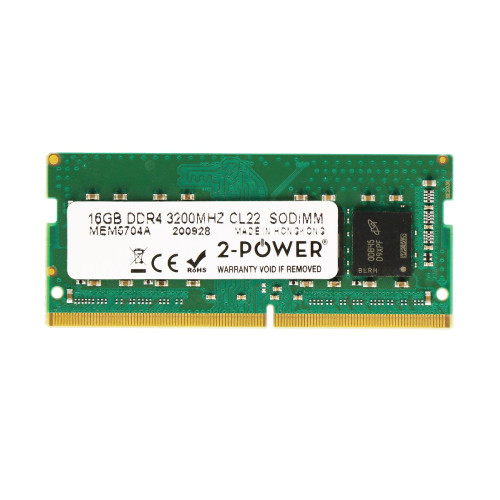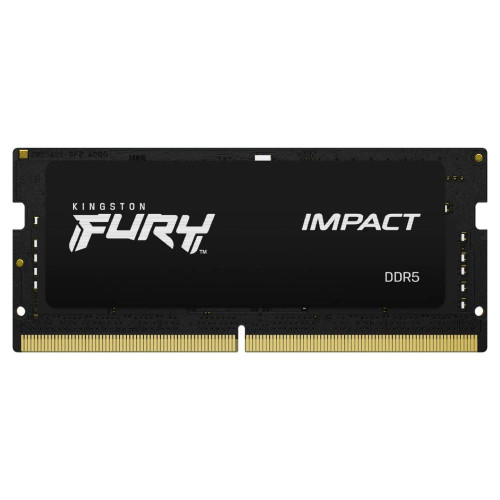POSTED: 22 October, 2024
Why Does RAM Matter?
You’re in the middle of editing a video, managing multiple apps, or browsing with way too many tabs open, and suddenly, your computer starts to drag. Sound familiar?
Having the right amount of RAM can transform your computer’s performance, ensuring smooth multitasking without those annoying slowdowns. But what exactly is RAM, and how do you choose the right one for your setup?
If you’re curious about how the RAM works, and why it matters for your system, keep reading.
What is RAM?
Random Access Memory (RAM) is your computer’s short-term memory. Unlike your hard drive or SSD, which stores data permanently, RAM temporarily holds the information your CPU needs to access quickly. This is what allows your system to perform tasks efficiently whether you’re surfing the web, editing a video, or playing the latest game.
RAM typically comes in the form of long, rectangular sticks with black memory chips. They’re usually encased to help with heat spreading, and they slot directly into your motherboard. Most motherboards have 2 to 4 slots, though some high-end models can have more.
Why Do You Need Multiple RAM Sticks?
If you’re wondering why your computer doesn’t just rely on one stick of RAM, it’s because multiple sticks offer greater capacity and speed. Each stick comes with its own set of characteristics such as capacity, speed, and voltage that can be mixed and matched to suit your needs.
Benefits of Multiple RAM Sticks:
- Increased Capacity: The more RAM you have, the more data your system can juggle at once.
- Better Performance: Dual or quad-channel memory setups maximise speed and performance.
- Enhanced Stability: More RAM means fewer crashes, especially when multitasking or running heavy applications.
- Future-Proofing: Having more slots lets you upgrade your memory as your needs evolve.
RAM Capacity and Speed: What You Need to Know
When choosing RAM, two key factors come into play: capacity and speed. Both will determine how well your system handles tasks.
Capacity: How Much Do You Really Need?
RAM capacity refers to the amount of memory available. Most commonly, RAM comes in sets of two sticks. For example, two 8GB sticks give you 16GB of RAM.
Here’s a quick breakdown:
8GB: Ideal for basic tasks like browsing, word processing, and light multitasking.
16GB: Perfect for moderate tasks such as video editing, gaming, and heavy multitasking.
32GB or More: Best for serious tasks like 3D rendering, video editing with large files, and gaming at ultra settings.
Speed: Faster RAM, Faster Performance
RAM speed, measured in megahertz (MHz), indicates how fast your memory can read and write data. The general rule is higher MHz = faster performance. For most users, 2400 MHz to 4400 MHz is the sweet spot, with 3500 MHz being optimal for solid performance in everyday tasks.
DDR4 vs. DDR5: Which One Should You Choose?
DDR4 has always been the default memory standard, and DDR5 was seen as the technology of the future. Today, that distinction is fading. DDR5 adoption is accelerating, supported by new CPUs and motherboards, while DDR4 is slowly being phased out.
Why DDR4 Still Matters
DDR4 continues to play an important role in today’s systems because it strikes the right balance between cost and performance.It is significantly more affordable than DDR5, making it an attractive choice for budget and mid-range builds where every pound counts. Compatibility is another major advantage DDR4 works with a vast range of existing motherboards and CPUs, which means you can upgrade your memory without having to replace your entire system.
For everyday computing, moderate gaming, and productivity tasks, DDR4 is still more than capable of handling workloads efficiently. Its ongoing production and support also mean that DDR4 will remain available for years, ensuring stability and accessibility for users who prefer a proven, cost-effective option.

Why DDR5 Is Becoming the New Standard
DDR5, on the other hand, has moved firmly into the spotlight as the emerging standard for high-performance systems. Its starting speeds of 4800 MT/s and beyond nearly double the bandwidth of DDR4, resulting in noticeable improvements in multitasking and demanding applications such as gaming, rendering, or data-intensive workloads.
DDR5 also supports much larger memory capacities for up to 128GB per module which makes it especially appealing for professionals and enthusiasts planning for next-generation software and workloads.
Beyond raw performance, DDR5 operates at a lower voltage of 1.1V and features integrated power management, which improves both energy efficiency and system stability. Most importantly, it offers future-proofing: as software, games, and emerging technologies evolve to take advantage of DDR5’s strengths, this memory type ensures your system will remain capable and relevant for years to come.

If you want to dive deeper and choose the best RAM for your PC, check out our full guide!
How to Choose the Right RAM for Your PC
Selecting the right RAM doesn’t have to be overwhelming. It all comes down to understanding what you use your PC for. Whether it’s gaming, video editing, or 3D rendering, here’s how to find the right RAM for you:
- Check Compatibility: Ensure your RAM is compatible with your motherboard and CPU. Double-check how many RAM slots you have.
- Choose the Right Module Type: Desktop PCs use UDIMM, while laptops use SODIMM, so be sure to pick the right size.
- Research Your Needs: Determine the capacity and speed you need based on your tasks (8GB, 16GB, or higher).
- Decide on the Number of Sticks: Opt for pairs of RAM sticks (like 2x16GB) for better performance through dual-channel memory.
- Consider Overclocking: If you plan to overclock your system, choose RAM with heat spreaders and the right voltage.
Recommended RAM Brands
When choosing RAM, selecting a trusted brand is just as important as picking the right specs. Here are a few top brands we recommend:
- Corsair and G.Skill: If you need high-performance memory, especially for gaming or demanding professional tasks like video editing and 3D rendering, these brands are top-notch. They’re known for delivering superior speed and stability, making them a go-to for serious users who need reliability under pressure.
- Kingston and Crucial: For those looking to upgrade on a budget, Kingston and Crucial are excellent options. These brands offer dependable RAM at affordable prices, giving you a solid boost in performance without stretching your wallet. They’re perfect for everyday tasks or users who want a reliable, cost-effective solution.
Both options ensure your PC runs smoothly, but your choice depends on whether you’re after peak performance or value for money.
Use our RAM Buying Guide to perfectly match the right amount and speed of RAM to your build goals and platform, making sure your system is ready for tomorrow's demands.
Conclusion: Boost Your Performance with the Right RAM
Upgrading your RAM is one of the most effective ways to enhance your computer's performance, and now that you’re equipped with the knowledge of what to look for, the process doesn't have to feel overwhelming. Whether you're a gamer, video editor, or someone who just wants smoother multitasking, selecting the right RAM is essential for unlocking your system's true potential.
If you're ready to upgrade and want quality options without breaking the bank, check out Box.co.uk. We offer a wide range of reliable memory options, so you can easily find the perfect RAM to suit your needs and take your PC’s performance to the next level.